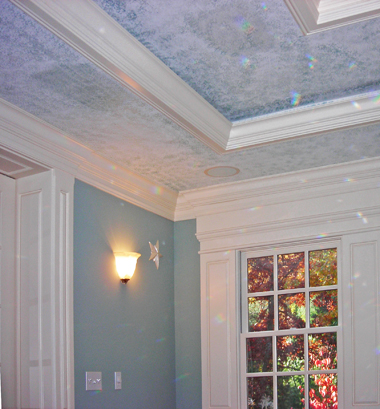
But remember that the exterior of a door is not the same as the interior side. Here some tips for getting a shiny, painted door when doing the work yourself.
First, some things you’ll need: drop cloths, painter’s tape, putty knife, cleaning solutions, wire brush, screwdriver, wood putty, paint brushes and rollers, medium and fine sandpaper, acrylic paint and primer, cleaning rags.
Gather these and other necessary equipment before you start the job to save time and make it easier.
- Use acrylic paint. Latex paint is no good for surfaces that have to stand up against the weather. Paint when the temperature is between 50 and 90 degrees for best results.
- Remove door knobs, knockers and any other fixtures. (Don’t lose the screws!) Place protective drop cloths all around.
- Clean the door. Mild, soapy water should do the trick. Do a thorough job. Clean mildew with bleach or a commercial solution for this purpose. Allow to dry thoroughly.
- Taping. Use painter’s tape to mask over hinges, weather stripping, the peephole and any hardware that you’ve decided not to remove. Be meticulous in this process.
- Scrape. If there’s any current paint that’s peeling, get it off with a putty knife. For metal doors, remove rust with a wire brush.
- Sand. Use a sanding block with medium grit sandpaper to thoroughly smooth out the entire surface. A damp cloth will remove any dust you create.
- Fill holes. Use a quality wood putty to patch any holes and let dry according to the putty label’s instructions.
- Apply primer. Use a primer with a stain blocker. You can apply with a roller for large surface areas. Use a brush for recessed areas and around the perimeter of the door. Let dry according to label instructions.
- Sand again. Once dry, you may find that the primer has left some rough areas on the surface. Use a fine-grit sandpaper for this and sand gently until smooth.
- Second primer coat. Apply another coat of primer and treat as above after dry.
-
The finish paint. Make sure your paint is fully mixed – have your paint retailer shake if for you, then stir it yourself before applying. Use a brush for recessed panels and around any taped hardware, then roll the flat surfaces. Use a roller thickness recommended by your paint retailer. Let dry, leaving the door ajar, if possible, to prevent sticking.
- Second coat. When the first coat is completely dry (usually 24 hours), apply the second coat in the same manner as the first. Give it another 24 hours before replacing hardware.
As you can see, even something as “simple” as painting a door can be an involved process if you want an excellent job. If you’d rather turn the project over to professionals, Franklin Painting of Connecticut is ready to help. For all interior and exterior painting needs, call the experts at (877) 646-7774.

Frank Campanelli, the esteemed founder of Franklin Painting LLC, has been leading the company since 1986. He takes immense pride in the stellar reputation his dedicated team has built by consistently delivering top-notch service to each customer.

 The finish paint. Make sure your paint is fully mixed – have your paint retailer shake if for you, then stir it yourself before applying. Use a brush for recessed panels and around any taped hardware, then roll the flat surfaces. Use a roller thickness recommended by your paint retailer. Let dry, leaving the door ajar, if possible, to prevent sticking.
The finish paint. Make sure your paint is fully mixed – have your paint retailer shake if for you, then stir it yourself before applying. Use a brush for recessed panels and around any taped hardware, then roll the flat surfaces. Use a roller thickness recommended by your paint retailer. Let dry, leaving the door ajar, if possible, to prevent sticking.

